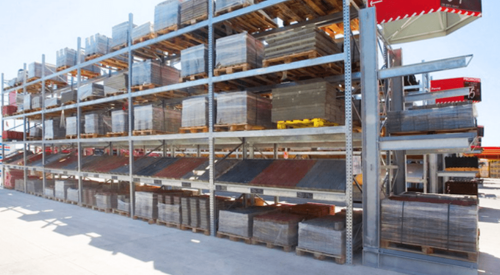For several months, Professional Builder has monitored the forecasts and fears of economists and builders to get a handle on the recent dip in demand for new homes. Is the worst over? Is the worst yet to come? The consensus: It depends.
Although the turndown is real, the severity of the change has varied wildly by region. In the Northeast in September for example, the Fed reported new home sales fell 35 percent. In the West, they rose 24 percent. In the Midwest, they fell 6.3 percent. Overall, the number of new permits nationally dropped by about 20 percent in 2006.
Economists' views tend to hinge on which economic benchmarks they prioritize. Those focused on the weakening U.S. dollar see danger ahead. Those who believe lower mortgage rates will renew sales have been more upbeat. In December, 30-year rates dropped to 6.08 percent — their lowest level since 2005. The bulls also see the recent upticks in home sales as evidence the worst is over; most consider the housing slide a market correction, not an impending collapse.
Dave Seiders, the NAHB's senior economist, told a U.S. Senate Committee in September that the housing downturn "amounts to an inevitable mid-cycle adjustment, or transition, from unsustainable levels of home sales, housing production and house price appreciation to levels that are supportable by underlying market fundamentals."
At the end of November, The Wall Street Journal conducted an economic survey of 49 economists. By a 2-1 margin, the economists predict that the so-called housing bust is over.
But not everyone is so sanguine. MarketWatch reports that Janet Yellen, president of the San Francisco Federal Reserve Bank, has been telling audiences that the slowdown has turned some parts of the Phoenix and Las Vegas metropolitan areas into "ghost towns," where many unsold homes stand empty.
DowntimeDespite differences about the future, economists agree that the current slump is real. As far back as August, economic factors such as high energy costs and inflated home prices affected consumer behavior. David Lereah, the National Association of Realtor's chief economist, told BusinessWeek that in areas such as California, the Northeast and Florida, "All households now — whether young, middle-aged or old — are postponing their home purchases because of the cooling market."
The Fed reported rising sales in the last few months of 2006, but they caution that those gains may not be statistically significant because they measure only contracts signed — not how many deals ultimately closed. And the word on the street is still high anxiety. Builders tell us cancellations have been way up, even in strong markets such as Southern California.
 Housing markets overpriced. "The breadth of house price bubbles is widening, as more and more metro areas appear on the list of highly overpriced markets ... covering about 30 percent of the nation's housing stock," says Moody's Economy analysts.  Too much product. This chart shows how unsold units of new housing has outpaced demand. Excessive supply combined with inflated costs has made buyers more cautious. |
The elephant in the room, of course, is inventory. Most builders have curtailed their spec building. But more than 500,000 unsold new homes still crowd the market — about six months of supply. Add in the glut of existing homes for sale — 2.87 million, the highest level in ten years — and you can see why some builders offer cars and vacations to new-home buyers.
The public builders have made no secret of their struggles. In early December, Toll Brothers got a flurry of media attention when Bob Toll's fourth quarter report showed that home building revenues, backlog and contracts had all declined from the previous year by 10 percent, 25 percent and 55 percent, respectively.
As inventories have gone up, builders have cut prices. According to MarketWatch, in September, they made those cuts at the fastest rate in 36 years, with a resulting increase of 5.3 percent in sales that month. Median new home prices for 2006 averaged about 9.7 percent less than 2005. Nonetheless, sales nationally were still down by about 16 percent compared to 2005. Existing home prices also declined at a record 2.5 percent in one year.
Home price inflation of recent years does have an up side. Builders have some room to tighten their belts on price. In 2005, new home prices shot up 13.4 percent. In 2006, they rose another 2.8 percent. Fewer price reductions will likely be needed to move excess product. Things could be worse.
The bottom line: consumers are still buying at a record rate, but until builders reduce inventory to sustainable levels, the elephant may continue to hang around.
|
Does Consumer Confidence Inventory alone, of course, does not steer the housing market. Another big indicator is consumer confidence, measured by perceptions of personal finances, employment security and buying conditions, among other things. And those numbers are looking up. In Florida, for example, the University of Florida’s November survey charted confidence among Floridians at 93, the highest reading since January 2006. And the Univversity of Michigan’s national survey of consumers finds them “cautiously upbeat” at the start of 2007 despite the housing slump. It’s not clear, however, whether overall confidence applies to home buying in a down market. James Chung, president of Reach Advisors in Belmont, Mass., just completed a survey showing a notable slip in consumer confidence about housing. In July 2005, he found that 27 percent of those surveyed said their plans to move were being affected by market conditions. His most recent survey, taken between Oct. 6 and 13, 2006, found that 41 percent rethinking their home buying/relocation plans.
|










